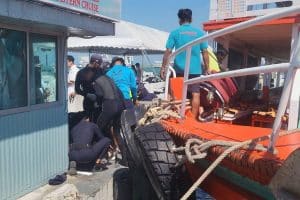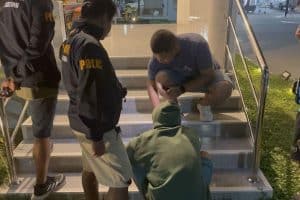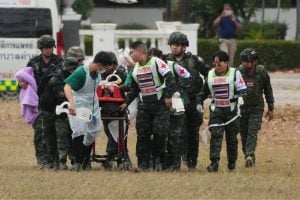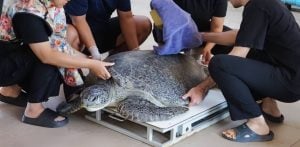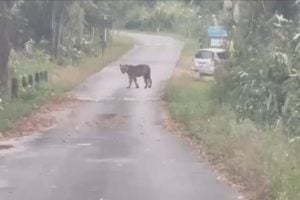Mango Tree elevates Thai dining with the launch of flagship restaurant in Guangzhou
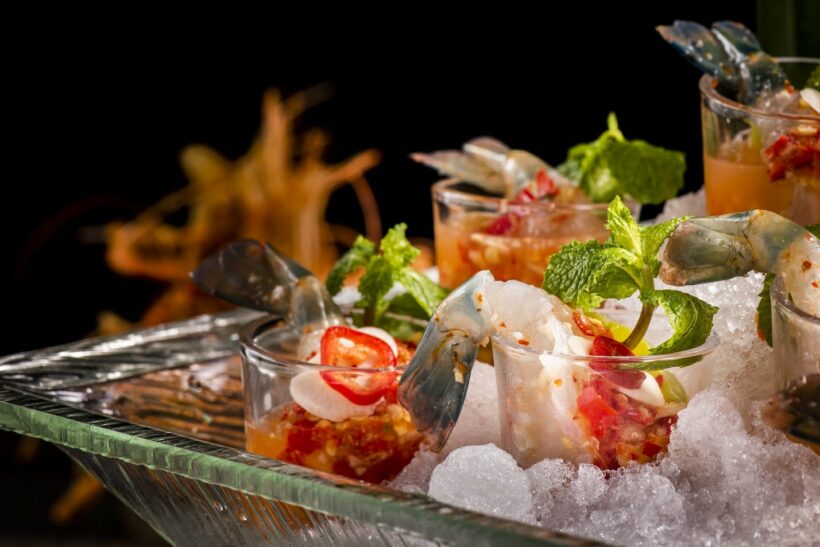
Leading Asian restaurant operator Mango Tree Worldwide has expanded its flagship brand in China with the opening of Mango Tree Guangzhou, a contemporary, design-led dining destination located in one of the world’s tallest buildings.
Created by Steve Leung, the award-winning Hong Kong-based architect and designer, Mango Tree Guangzhou features a rainforest and island themed interior, allowing diners to feel the true essence of Thailand.
Natural wood, tropical plants and rattan chairs are combined with a state-of-the-art lighting installation to create the impression that guests are dining in a Thai forest, under the blinking lights of a starry sky.
This enchanting effect is enhanced by the restaurant’s elevated setting. Perched seven floors above ground in the K11 Art Mall, which forms part of the 530 metre tall Guangzhou CTF Finance Centre, diners are treated to spectacular city views.
In addition to the spacious restaurant area, a stylish bar is framed by floor-to-ceiling windows overlooking the Guangzhou skyline, and a relaxing alfresco terrace features cosy sofas and lush greenery to create a tree house-like ambience, high above the city – with a DJ playing into the night. The launch DJ is Juli York from Ukraine playing a coterie of trip hop and Latin, Afro and Chicago house.
This exquisite design concept perfectly reflects the restaurant’s culinary style, which focuses on authentic Thai cuisine prepared and presented with contemporary flare and a cool, lifestyle vibe.
“We are delighted to unveil Mango Tree Guangzhou as our new flagship restaurant in China. With Steve Leung’s signature design and our contemporary style of Thai cuisine, I am confident that this drive us to new places and literally elevate our experience for Chinese diners to enjoy,” said Trevor MacKenzie, Mango Tree’s Global Managing Director.

“China is naturally a very important market for Mango Tree Worldwide. With more than nine million Chinese travellers now visiting Thailand every year, the country is developing a keen appetite for authentic Thai cuisine. We look forward to introducing our signature Mango Tree restaurant concept to diners in even more Chinese cities in future,” Mr MacKenzie added.
Mango Tree Guangzhou seats approximately 150 diners for all types of occasion, from large family groups to intimate couples’ meals and corporate business functions. Many of the tables are positioned next to panoramic windows, allowing diners to gaze out over the glittering city.
The menu at Mango Tree Guangzhou combines genuine Thai flavours and sophistication, using the finest and freshest ingredients. Chef Aphichat will take diners on a culinary journey to the four regions of Thailand – north, northeast, south and central – with signature dishes including yellow crab curry; tom yum goong (spicy and sour soup with prawns); and mango sticky rice with coconut milk. The bar has also introduced a number of special Thai cocktails, including a signature lemongrass mojito.
Mango Tree Guangzhou becomes the upscale brand’s second restaurant in Mainland China, joining the existing Mango Tree Qingdao. In total, Mango Tree Worldwide now operates a total of 64 outlets worldwide.
This impressive new restaurant also marks the latest successful project for designer Steve Leung, who has been responsible for major hospitality projects including Sing Yin at W Hong Kong, Yuan at Atlantis The Palm Dubai, and the Shangri-La Hotel at The Shard in London.
Mango Tree Guangzhou is expected to become extremely popular among local and international professionals, upmarket residents, high-spending tourists and more. The restaurant will be open daily for lunch and dinner.
Latest Thailand News
Follow The Thaiger on Google News:











